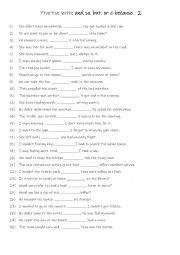
|
A1+- A2 Practise with and, so, but, or & because 2
First, students need to familiarise themselves with the 5 linkers and their usage. Then they read the sentences to see which one is needed to complete the gap-fill. Each conjunction is used 6 times! Answers on page 2.
Level: elementary
Age: 8-100
Type:
Downloads: 116
|
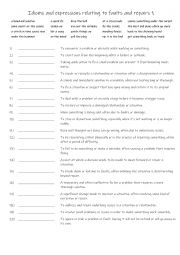
|
B1+-C1 Idioms and expressions relating to faults and repairs 1
First, students need to familiarise themselves with the 20 idioms and expressions and their meanings. Then they read the definitions to see which one is being described and write that word in the space provided Answers on page 2.
Level: intermediate
Age: 12-100
Type:
Downloads: 116
|
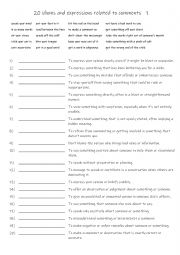
|
B1+-C1 Comment idioms and expressions 1
First, students need to familiarise themselves with the 20 idioms and expressions and their meanings. Then they read the definitions to see which one is being described and write that word in the space provided Answers on page 2.
Level: intermediate
Age: 12-100
Type:
Downloads: 116
|
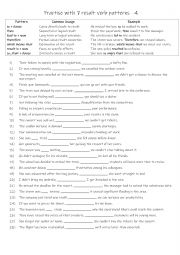
|
B1-B2 Practise with 7 result verb patterns 4
First, students need to familiarise themselves with the 7 result verb patterns and use. Then they read the sentences to work out which one is needed to complete the gap-fill. Each verb pattern is used 4 times! Answers on page 2.
Level: intermediate
Age: 10-100
Type:
Downloads: 116
|
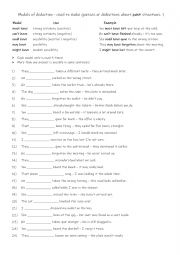
|
5 modals of deduction - used to make guesses or deductions about past situations. 1
Students should learn modals of deduction because they are useful for expressing logical guesses or assumptions about past situations, helping speakers show how certain or uncertain they are. These modals, such as must have, might have, could have , and can�t have, make speech sound more natural and fluent, improve communication and reasoning ski...
Level: elementary
Age: 10-100
Type:
Downloads: 116
|
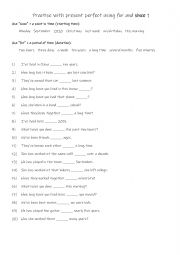
|
A1+-A2 Practise with present perfect using for and since 1
Students read the sentences and complete the sentences with the required word. Answers on page 2.
Level: elementary
Age: 8-100
Type:
Downloads: 116
|
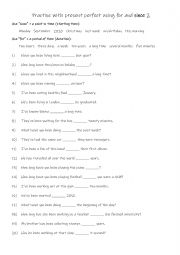
|
A1+-A2 Practise with present perfect using for and since 2
Students read the sentences and complete the sentences with the required word. Answers on page 2.
Level: elementary
Age: 8-100
Type:
Downloads: 116
|
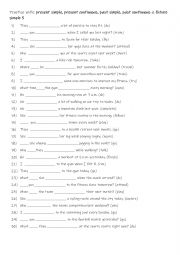
|
A1-A2 Practise with present simple, present continuous, past simple, past continuous & future simple 5
Students need to use present simple, present continuous, past simple, past continuous, and future simple to communicate effectively and express time-related ideas clearly in English. The present simple is used for routines, habits, and facts, while the present continuous describes ongoing or temporary actions. The past simple narrates completed eve...
Level: elementary
Age: 7-100
Type:
Downloads: 116
|
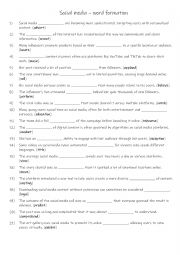
|
B1 Social media word formation
Understanding word formation allows students to expand their vocabulary, enabling them to express themselves more precisely and creatively. Knowing how to manipulate words helps them create varied sentence structures, making their writing more engaging and dynamic. Mastering word formation is key to achieving higher levels of language proficiency, ...
Level: intermediate
Age: 8-100
Type: worksheet
Downloads: 115
|
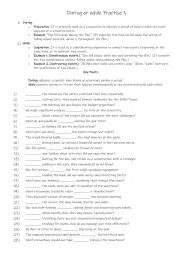
|
During or while Practise 1
Using the the given grammar rules and usage on the page, students complete the sentences and questions with the correct preposition or conjunction. This worksheet is mainly for B1 level students although it could be used with strong A2+ students. There are 7 questions and sentences for both while and during. Answers are on page 2.
Level: intermediate
Age: 10-100
Type:
Downloads: 115
|












